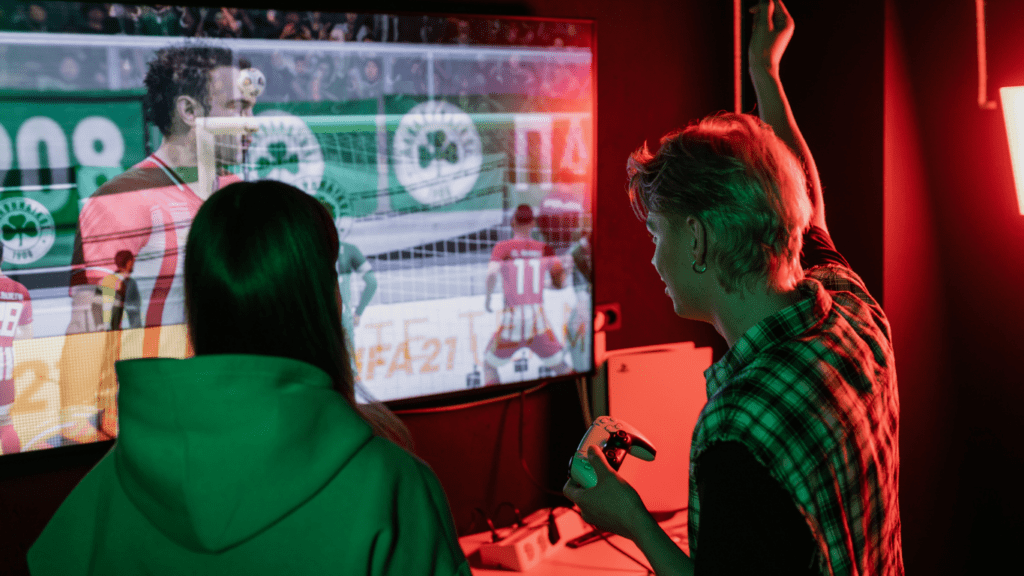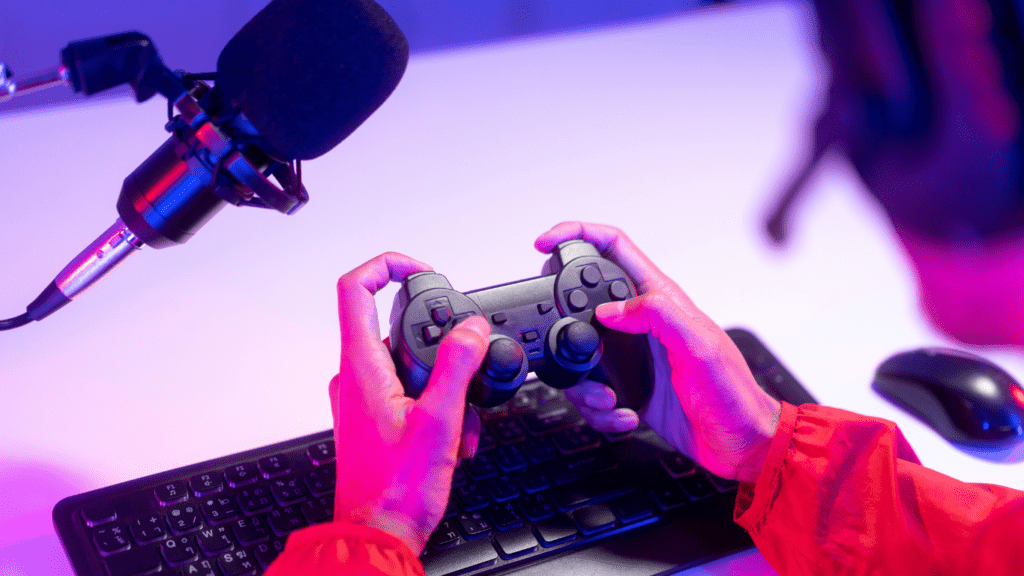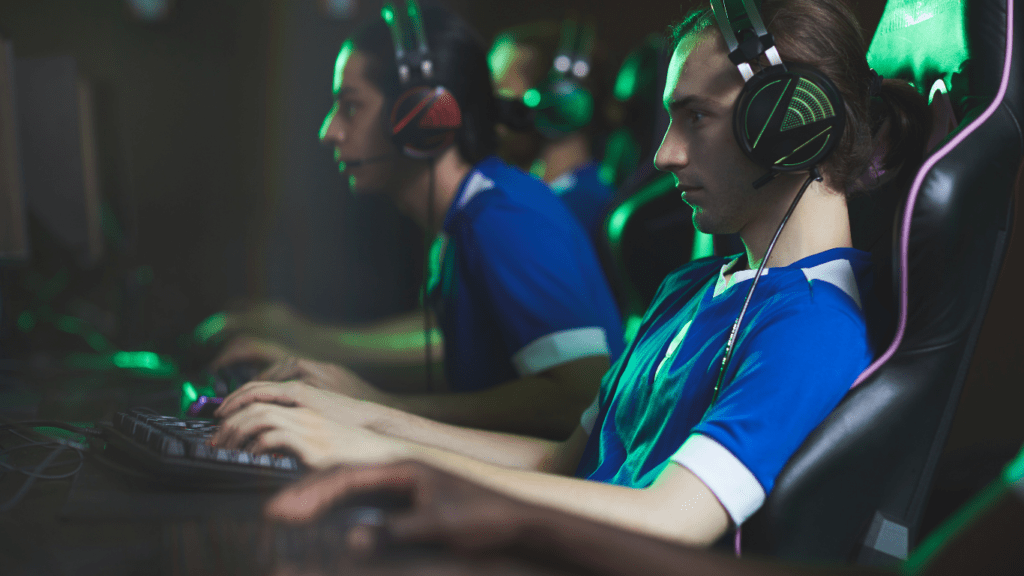Overview of E-Sports and Traditional Sports
E-sports represent a form of competition using video games. Professional players and teams compete in organized multiplayer video game tournaments. Popular e-sports titles include “League of Legends,” “Dota 2,” and “Counter-Strike: Global Offensive.” These events often draw massive online and live audiences, with viewership numbers rivaling those of traditional sports.
Traditional sports, on the other hand, involve physical contests or games, often governed by established rules. Examples include soccer, basketball, and tennis. Traditional sports have a long history and are typically played in outdoor or indoor arenas with spectators present.
Both e-sports and traditional sports require extensive training and skill. E-sports athletes focus on reaction time, strategic thinking, and coordination. They spend hours practicing and studying game mechanics to stay competitive. Traditional athletes train physically, working on strength, endurance, and technique in their respective sports.
The cultural impact varies significantly between e-sports and traditional sports. E-sports have a strong presence online, with platforms like Twitch and YouTube being central to their ecosystem. Traditional sports enjoy mainstream media coverage and are staples in global events like the Olympics and FIFA World Cup.
Fan engagement also differs between the two. E-sports fans engage primarily through digital platforms, participating in live chats, forums, and social media. Traditional sports fans often attend live matches, join fan clubs, and follow teams through television broadcasts.
E-sports and traditional sports offer unique experiences, each compelling in its way. The rise of e-sports has brought a new dimension to competitive entertainment, while traditional sports continue to hold their valued place in cultural and athletic traditions.
Historical Background
Understanding the differences between e-sports and traditional sports requires a look at their historical backgrounds.
Origins of Traditional Sports
Traditional sports have roots tracing back thousands of years. Ancient civilizations like Greece and China introduced early sports activities, such as the Olympic Games around 776 BC for the Greeks and martial arts for the Chinese.
Many modern sports, including soccer, basketball, and track and field, evolved from these early forms. Historically, traditional sports were central to cultural celebrations and rituals, offering a sense of community and identity. Sports like cricket and rugby gained prominence during the British Empire, spreading globally as a result.
Emergence of E-Sports
E-sports emerged from competitive video gaming, which began gaining traction in the late 20th century. The 1980s saw the first organized gaming competitions, such as the Space Invaders Championship in 1980, which drew over 10,000 participants in the US.
The 1990s brought the rise of the internet, allowing multiplayer games like “Doom” and “Quake” to gain popularity. South Korea became a significant player in e-sports during the early 2000s, with games like “StarCraft” leading the charge. This growth continued with platforms like Twitch, launched in 2011, which enabled live streaming of competitions, further cementing e-sports’ global presence.
Physical and Mental Demands
E-sports and traditional sports place different physical and mental demands on their participants. Both require extensive preparation but focus on distinct skill sets tailored to their unique challenges.
Physical Requirements
Traditional sports demand high levels of physical fitness. Athletes engage in activities like:
- running
- jumping
- lifting
which build strength, endurance, and agility. They often train daily, incorporating exercises such as weightlifting, cardio, and sport-specific drills. For example, soccer players run drills to improve ball control and stamina.
E-sports don’t require such intense physical activity. Gamers focus on hand-eye coordination, reaction times, and fine motor skills. They might practice for hours, refining techniques and memorizing game patterns. Common exercises include wrist and finger stretches to prevent injury and enhance performance, ensuring they maintain their competitive edge.
Mental Stress And Strategy
Mental stress differs significantly between the two domains. Traditional sports athletes handle pressure from physical performance, strategizing in real-time, and maintaining focus despite fatigue. For instance, a basketball player must decide on the best play while under physical exhaustion and opponent pressure.
E-sports athletes face cognitive load from continuous gameplay, quick decision-making, and strategic planning. They need to manage stress from long practice sessions and competitive matches. Gamers coordinate with team members, execute complex strategies, and remain calm under pressure. Popular games like League of Legends demand constant mental acuity and strategic foresight, where a single decision can shift the game’s outcome.
Audience and Popularity

Audience engagement and the popularity of both e-sports and traditional sports have seen significant evolution in recent years. These changes reflect broader shifts in media consumption and societal trends.
E-Sports Fanbase
E-sports have surged in popularity, attracting a global audience. Platforms like Twitch and YouTube Gaming stream matches that draw millions of viewers. In 2022, the global e-sports audience was approximately 532 million, according to Statista.
Fans participate actively through live chats and social media interactions. Major e-sports events, like The International and League of Legends World Championship, attract viewership on par with traditional sporting events.
The demographic skews younger, with a significant portion of fans aged 18-34. Brands and sponsors have taken note, investing heavily in influencer marketing and event sponsorships.
Traditional Sports Viewership
Traditional sports have long commanded large audiences, with viewership numbers reflecting deep-rooted fan bases and well-established institutions. Events like the FIFA World Cup, Super Bowl, and the Olympics regularly draw billions of viewers worldwide.
Nielsen reports indicate that major leagues like the EPL, NBA, and NFL sustain high viewership through dedicated TV channels, streaming services, and in-person attendance.
The fan demographic is diverse, though there is a leaning towards older age groups compared to e-sports. Personalities and teams became household names over decades, driving substantial revenue from merchandise, ticket sales, and broadcast rights.
While e-sports have seen rapid growth driven by digital platforms and younger audiences, traditional sports maintain strong viewership through established channels and a broader demographic.
Economic Impact
The economic impact of both e-sports and traditional sports has grown significantly in recent years. These industries contribute billions in revenue globally, yet their economic influences differ.
Market Size of E-Sports
E-sports has experienced exponential growth. According to Newzoo’s 2023 Global Esports Market Report, the global e-sports market generated approximately $1.38 billion in revenue.
Major revenue streams include sponsorships, media rights, advertising, and merchandise sales. For example, sponsorships alone contributed around $641 million. High-profile tournaments like The International also offer multi-million dollar prize pools, attracting widespread media attention and boosting viewership, which in turn drives economic growth.
Economic Influence of Traditional Sports
Traditional sports continue to dominate economically. The sports market in North America, the largest by revenue, reached over $73 billion in 2022, according to a PwC report.
Revenue sources include ticket sales, sponsorships, broadcasting rights, and merchandise sales. Events such as the Super Bowl and the Olympics generate billions through broadcasting and advertising deals.
For instance, the NFL secured $113 billion in broadcasting contracts over 11 years, reflecting the significant economic impact of traditional sports.
Training and Skill Development
Both e-sports and traditional sports demand rigorous training and skill development but differ significantly in methodologies due to the nature of the activities.
Training for E-Sports Athletes
E-sports athletes undergo specialized training that focuses on refining motor skills, enhancing strategic thinking, and improving hand-eye coordination. Sessions often include extensive practice matches, tactical reviews, and scenario planning.
Nutritional and mental health support is essential to ensure peak performance. For instance, teams like Cloud9 and Ninjas in Pyjamas incorporate dietary consultations. Cognitive training tools like Aim Lab are used to sharpen reflexes and accuracy.
Traditional Sports Training Regimens
Traditional sports training emphasizes physical conditioning, skill refinement, and tactical training. Athletes participate in exercises designed to improve strength, stamina, and agility.
Practices include skill drills, strategy sessions, and sometimes scrimmage matches. Sports-specific strength and conditioning programs are integral, with examples like NBA players completing strength workouts and running drills. Nutritionists and physiotherapists play a crucial role, like those employed by teams such as the Dallas Cowboys, in maintaining athletes’ physical health.
Both training methodologies underscore the importance of specific skill sets aligned with their respective sports. This training and skill development ensure athletes can perform at the highest levels, whether on digital platforms or physical arenas.
Social and Cultural Impacts
E-sports and traditional sports influence society and culture in unique ways. They shape community interactions and national identities differently.
E-Sports in Society
E-sports attract a diverse, global audience. Gamers from various cultural backgrounds come together, creating an inclusive community. Streaming platforms like Twitch and YouTube Gaming make e-sports accessible, fostering a sense of belonging among fans.
Online forums and social media amplify this reach, allowing fans to engage and share strategies. Major tournaments, like The International and the League of Legends World Championship, draw millions of viewers, highlighting the cultural resonance of e-sports. These events create opportunities for fans to participate in discussions, contribute to fan art, and form fan clubs.
Cultural Significance of Traditional Sports
- Traditional sports hold a profound place in cultural heritage. They often serve as a source of national pride and unity.
- Events like the FIFA World Cup and the Olympics foster a sense of national identity, bringing people from different backgrounds together.
- Local sports teams also play a crucial role in community engagement. Fans develop deep-rooted connections with their hometown teams, participating in game-day rituals and traditions.
- High school and college sports bolster community spirit and offer a sense of continuity and belonging.
- Labor Day, Super Bowl Sunday, and other sports holidays reflect the ingrained nature of traditional sports in societal norms. These events become cultural touchstones, celebrated widely across various demographics.
Future Prospects
The Growing Influence of E-Sports
E-sports have rapidly gained traction over the past decade. This burgeoning sector continues expanding its global footprint through increased investments, sponsorship deals, and media coverage.
According to Newzoo, the global e-sports audience reached 532 million in 2022. Major corporations like Coca-Cola and Intel invest heavily in e-sports tournaments, which are often streamed live on platforms like Twitch and YouTube, attracting millions of viewers. Colleges and universities now offer e-sports scholarships and degree programs, signaling institutional validation and further integrating e-sports into mainstream culture.
Evolution and Adaptation of Traditional Sports
Traditional sports aren’t standing still. They continue adapting to technological advancements and evolving audience preferences. For instance, instant replay, VAR (Video Assistant Referee) systems, and advanced athlete performance analytics enhance the quality and fairness of competitions.
Augmented reality (AR) and virtual reality (VR) provide fans with immersive viewing experiences. Sports organizations, including the NBA and NFL, have begun leveraging digital platforms for fan engagement, such as live streaming games and offering interactive content on mobile apps.
Sustainability initiatives, like eco-friendly stadiums and reduced carbon footprints, reflect the sports industry’s adaptation to global environmental concerns.
Both sectors exhibit evolution, transforming to stay relevant and engaging amidst changing technological and social dynamics.



